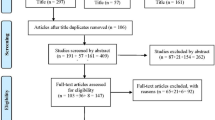Abstract
The term ‘concept’ is used in different ways within educational literature and has at least two different, although related, referents in relation to science knowledge, namely, public knowledge and private understandings. A taxonomic structure for ‘science concepts’ (public knowledge) has been developed to provide a rationale for the choice of phenomena to be used in the investigation of students’ ‘concepts’ and also to act as a frame of reference for generating insights about the data to be collected. Furthermore, it may be a useful heuristic to predict other science concepts likely to be highly problematic in school teaching situations and thus worthy of detailed research. The taxonomy, called a ‘Scale of Empirical Distance’ (SED), enables science concepts to be mapped according to their degree of closeness to concrete realities. The scale shows a recognition of the empirical basis of science concepts and the role of human senses in the perception of the material world even though “absolute objectivity of observation is not a possible ideal of science” as Harre (1972) has noted. The scale uses two binary variables, namely, ‘visual’ and ‘tactile’, to generate four categories of science concepts ranging on a continuum from concrete to abstract. Some concepts related to ‘matter’ will be classified and discussed.
Similar content being viewed by others
References
ARMSTRONG, S. L, GLEITMAN, L. R. & GLEITMAN, H. (1983) What some concepts might not be.Cognition, 13, 263–308.
AUSUBEL D. P., (1968)Educational psychology: a cognitive view. New York, Holt Rinehart & Winston.
CANTU, L. L. & HERRON, J. D. (1978) Concrete and formal Piagetian stages and science concept attainment.Journal of Research in Science Teaching, 15 (2) 135–143.
GAGNE, R. M. (1977)The conditions of learning (3rd ed.). New York, Holt, Rinehart & Winston.
GLEITMAN, L. R., ARMSTRONG, S. L. & GLEITMAN, H. (1983) On doubting the concept ‘concept’. In E.K. Scholnick(Ed)New trends in conceptual representation: challenges to Piaget’s theory?, Hillsdale, N.J., Lawrence Erlbaum.
GILBERT, J. K. & WATTS, D. M. (1983) Concepts, misconceptions and alternative conceptions: changing perspectives in science education.Studies in Science Education, 10, 61–98.
HARRE, R. (1982) Personal meanings: semantic relations of the fourth kind. In E. Shepherd & J. P. Watson (eds)Personal meaning: the first Guy’s Hospital symposium on the individual frame of reference. Chichester, Wiley.
HERRON, J. D., CANTU, L. L., WARD, R. & SRINIVASAN, V. (1977) Problems associated with concept analysis.Science Education, 61 (2), 185–199
JOHNSON-LAIRD, P.N. & WASON, P.C. (Eds) (1977)Thinking: readings in cognitive science. New York, Cambridge University Press.
JONES, B. L. (1984) How solid is a solid: Does it matter?Research in Science Education, 14, 104–113.
JONES, B. L., LYNCH, P. P. & REESINK, C. (1987) Children’s conceptions of the Earth, Sun and Moon.International Journal of Science Education, 9, (1) 43–53.
JONES, B. L., LYNCH, P. P. & REESINK, C. (1989) Children’s understanding of the notions of solid and liquid in relation to some common substances.International Journal of Science Education, 11 (4) 417–427.
NOVAK, J. D. (1977)A theory of education. Ithaca, NY, Cornell University Press.
NOVAK, J. D. & GOWIN, D. B. (1984)Learning how to learn. Cambridge, Cambridge University Press.
OSBORNE, R. & FREYBERG, P. (1985)Learning in science. Auckland, Heineman.
PINES, A. L. (1985) Towards a taxonomy of conceptual relations and the implications for the evaluation of cognitive structures. In L. H. T. West & A. L. Pines (eds) Cognitive structure and conceptual change, Orlando FL Academic Press.
PINES, A. L. & LEITH, S. (1981) What is concept learning in science? Theory, recent research and some teaching suggestions,Australian Science Teachers Journal, 27 (3) 15–20.
PREECE, P.F.W. (1978) Exploration of semantic space.Science Education, 62 (4) 547–562.
REDMAN, S., BRERETON, A., BOYERS, P. & TURTON, B. (1967)Report to the Department of Education and Science on an enquiry into the formation of scientific concepts in children 5–13 (1964–1967), University of Oxford Institute of Education. (DSE Report S. 473/ 6/ 67).
REDMAN, S., BRERETON, A., BOYERS, P. & TURTON, B. (1969)An approach to primary science. New York, Macmillan.
ROSCH, E. (1977) Classification of real-world objects: origins and representations in cognition. In P. N. Johnson-Laird & P. N. Wason,Thinking: readings in cognitive science. Cambridge, Cambridge University Press.
SCHOLNICK, E.K. (ed) (1983)New trends in conceptual representation: challenges to Piaget’s theory? Hillsdale, N.J., Lawrence Erlbaum.
SUTTON, C. (1980) Science, language and meaning.School Science Review.62(218), 47–56.
SYMINGTON, D. J. (1984) Communication: process and product.Australian Science Teachers Journal, 30(3), 10–21.
WEST, L. H. T., FENSHAM, P. J. & GARRARD, J. E. (1985) Describing the cognitive structures of learners following instruction in chemistry. In L. H. T. West & A. L. Pines (eds)Cognitive structure and conceptual change. Orlando, FL, Academic Press.
WHITE, R. T. (1987) The future of research in cognitive structure and conceptual change.AERA SIG-Cognitive Structure and Conceptual Change. Newslette,7.
WHITE, R. T. (1988)Learning science. Oxford, Basil Blackwell.
Author information
Authors and Affiliations
Additional information
Specializations: science teacher education, primary science curriculum and methods, students’ personal meanings of phenomena.
Rights and permissions
About this article
Cite this article
Jones, B.L. Developing a taxonomy of science concepts based on a scale of empirical distance. Research in Science Education 20, 161–170 (1990). https://doi.org/10.1007/BF02620491
Issue Date:
DOI: https://doi.org/10.1007/BF02620491




